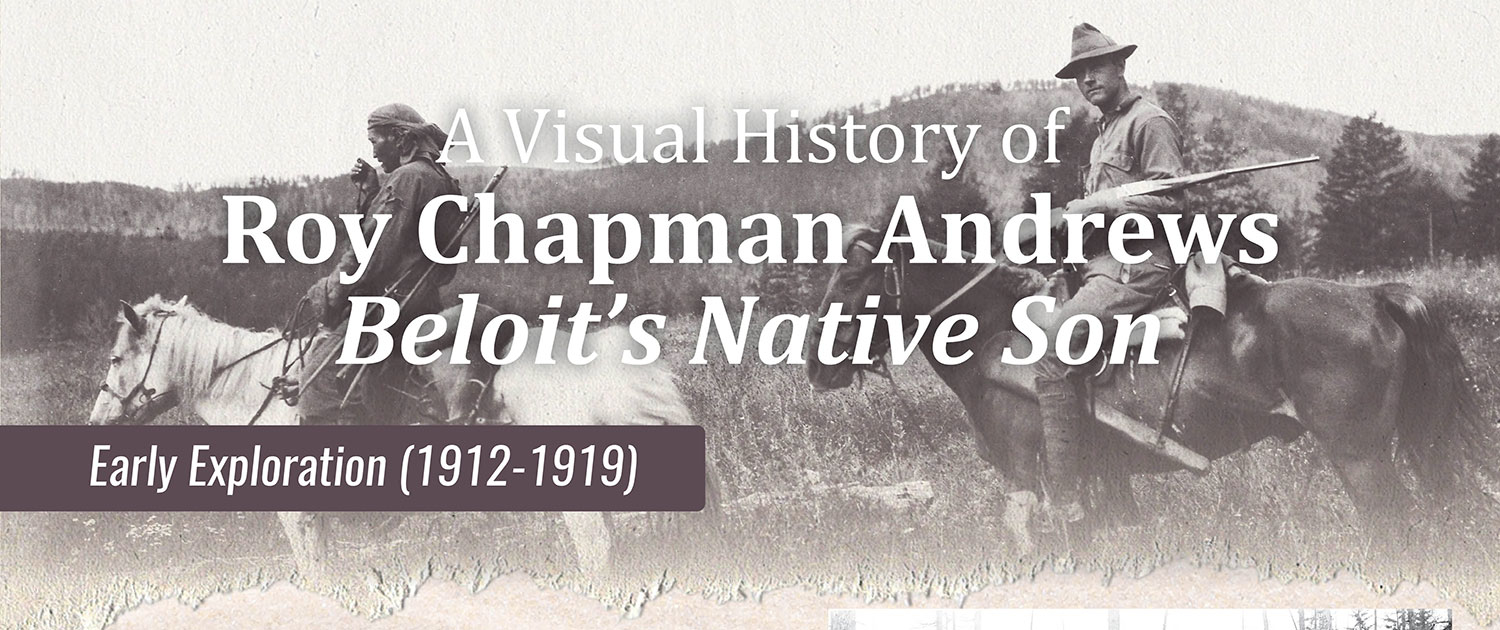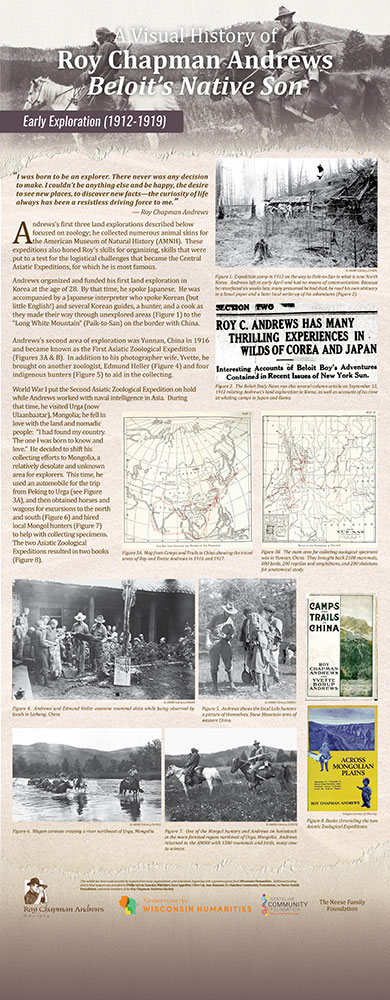Early Exploration (1912-1919)
“I was born to be an explorer. There never was any decision to make. I couldn’t be anything else and be happy, the desire to see new places, to discover new facts — the curiosity of life always has been a resistless driving force to me.”
~Roy Chapman Andrews
Andrews’s first three land explorations described below focused on zoology; he collected numerous animal skins for the American Museum of Natural History (AMNH). These expeditions also honed Roy’s skills for organizing, skills that were put to a test for the logistical challenges that became the Central Asiatic Expeditions, for which he is most famous.
Andrews organized and funded his first land exploration in Korea at the age of 28. By that time, he spoke Japanese. He was accompanied by a Japanese interpreter who spoke Korean (but little English!) and several Korean guides, a hunter, and a cook as they made their way through unexplored areas (Figure 1) to the “Long White Mountain” (Paik-to-San) on the border with China.
Andrews’s second area of exploration was Yunnan, China in 1916 and became known as the First Asiatic Zoological Expedition (Figures 3A & B). In addition to his photographer wife, Yvette, he brought on another zoologist, Edmund Heller (Figure 4) and four indigenous hunters (Figure 5) to aid in the collecting.
World War I put the Second Asiatic Zoological Expedition on hold while Andrews worked with naval intelligence in Asia. During that time, he visited Urga (now Ulaanbaatar), Mongolia; he fell in love with the land and nomadic people: “I had found my country. The one I was born to know and love.” He decided to shift his collecting efforts to Mongolia, a relatively desolate and unknown area for explorers. This time, he used an automobile for the trip from Peking to Urga (see Figure 3A), and then obtained horses and wagons for excursions to the north and south (Figure 6) and hired local Mongol hunters (Figure 7) to help with collecting specimens. The two Asiatic Zoological Expeditions resulted in two books (Figure 8).


